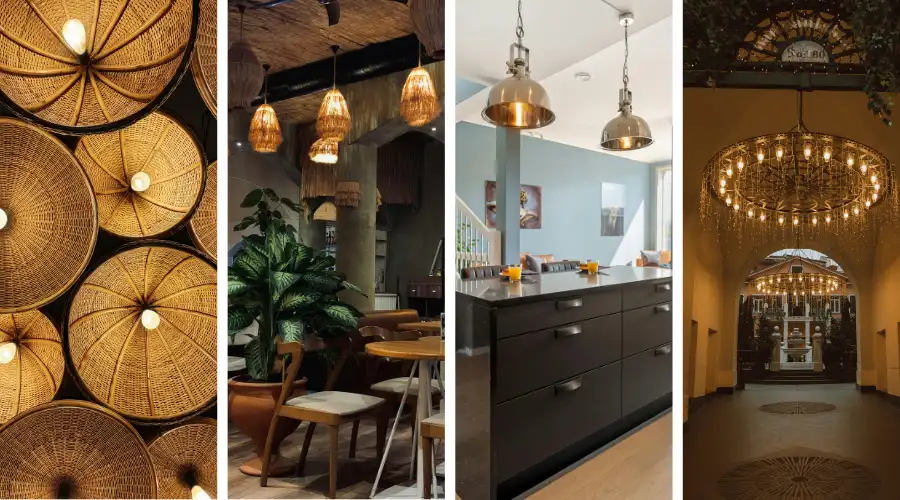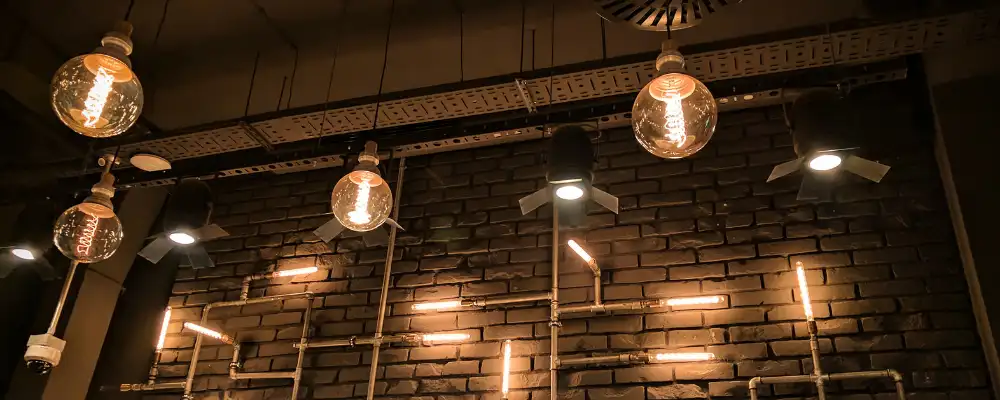Foyer lighting fixtures are necessary elements in every house design as they perform both functional and aesthetic roles. A foyer is the first room that connects the interior and the exterior and acts as a bridge for the entire house. The entrance area lighting system not only ensures the safety of guests but also makes the foyer a welcoming place for them. By reading this article, you will be introduced to the many types of foyer lighting fixtures, their advantages, installation methods, and maintenance. The information will help you to be wise enough to start a lighting project for your foyer or upgrade the current one.
General Features of Foyer Lighting Fixtures
The main objectives of foyer lighting fixtures are to increase the visibility level and create a better atmosphere in the entryway. The lighting that you decide to use will totally change the style of a foyer. Different types of lighting based on the method of mounting— conventional ceiling, wall, or floor—can be chosen according to the complexity and dimensions of the foyer. When selecting a light source for your entrance, some of the other factors that should not be overlooked are the space height, entrance dimensions, and the main style of the room. A well-thought-out lighting setup will not only add to the visual appeal of a foyer, but also make sure that a safe and inviting passage to and from the house is achieved.
Benefits of Foyer Lighting Fixtures
- Improved Safety: The right entrance lighting ensures safety during usage at all times. There is reduced potential for stumbling or tripping accidents.
- Enhanced Aesthetic Appeal: Light fixtures highlight the architecture and interior decor of a space, producing a welcoming ambiance that enhances curb appeal.
- Increased Property Value: A beautifully lit entrance adds to overall curb appeal that can attract new buyers and increase overall property value.
- Energy Efficiency: New lighting options such as LEDs and motion sensor lights provide sufficient illumination while consuming less energy and ensuring cost-savings.
- Improved Mood and Ambiance: The right lighting can create a pleasant feel while making guests feel more welcome. Good lighting creates a warm atmosphere that begins from the first few steps in a home.
Types of Foyer Lighting Fixtures

Chandelier
Chandeliers are a means of providing both lighting and adding to the luxurious look of a foyer. They hang from the ceiling and usually have several arms with light bulbs or candles. Apart from being a good source of lighting, they are also an ideal element for the decoration of homes with large foyers and high ceilings. The material list for chandeliers is very wide, covering crystal, glass, metal, and even wood, so that a user can find whatever suits their taste and preference. A chandelier must be installed at an appropriate height (above 7 feet from the floor) to prevent interference and ensure clearance and safe passage.
Pendant Lights
A pendant light is usually suspended on a single point on the ceiling, and there is a varied range of lights that can be selected from. This smart light source is not only suitable for high and low foyers, but it also provides the right amount of lighting. The versatility in the pendant lighting category allows homeowners to choose light fixtures that fit their styles, traditional, modern, or industrial designs. Furthermore, pendant lights are perfect to be set up in clusters, which means you can mount multi-light pendants to make the overall appearance of the foyer more attractive.
Flush Mount Light
Flush mount lights are recessed into the ceiling and only their facing surface is visible and flush with the ceiling. These lighting solutions are usually found in foyers with low ceilings because they don’t take up additional height and hinder clear passage. The light from them is generally much softer and uniformly distributed, thus making them suitable for small foyers where space is very limited.
Wall Sconces
Wall sconces are those electric lighting fixtures that are attached to the wall and are used to throw light upwards or downwards. These can be utilised to emphasise the structural beauty of a space, display art pieces or highlight specific features. Wall sconces come in an abundance of designs, from traditional to modern to even the industrial ones. They are generally combined with other light forms in various combinations to achieve a layered lighting effect. A well-placed sconce can act as a focused light source without taking up any ceiling space.
LED Strip Lighting
The sleek designs of LED strip lights could easily make them the top preference for contemporary lobby floors. An LED strip produces an elongated line of light that uniformly lights up a space. It is the most common type used to provide indirect or ambient lighting in ceiling soffits and walls or also under the stairs. The usual thing is to couple LED strips with other lighting sources, thus creating visually bigger and deeper spaces. LEDs are also an ecological solution, as the light they produce is sufficient for a good entrance look and their energy requirement is low.
Cove Lighting
Cove lighting is a type of illumination that is recessed above the ceiling and is used to send rays of light upwards. The light is well scattered across the ceiling, thus producing a soft, diffused glow that is pleasant and does not cast a glare into one’s eyes. Cove lighting is usually used for the purpose of emphasising specific features on a ceiling. It is most effective in large foyers where lighting is softened but the space still needs to be bright.
Accent Lighting
Accent lighting in most cases is employed as a means to draw attention to the objects or features that make the foyer unique, such as art, sculptures, or architectural elements. The inclusion of accent lighting can cast strong shadows that emphasize the dimension and/or wall texture design of the hall, thus drawing attention to the entryway’s focal points. Integration of accent lighting with other kinds of lighting results in an interesting lighting design that focuses on the foyer’s prominent features.
Motion Sensor Lights
Motion sensor lights can be used to automate foyer lighting. These lights switch on automatically when motion is sensed and off again after a certain interval of non-activity. They are especially useful when the foyer is a place where people continuously come in and out of as hands-free convenience can be provided. Motion sensor lights of different styles, namely wall-mounted and ceiling fixtures, can also be used in tandem with other lighting systems, as this not only saves energy but also provides a seamless lighting experience.
How to Choose the Right Lighting Fixtures for Your Foyer
When selecting foyer lighting, consider the following factors:
- Ceiling Height: For large chandeliers or pendant lights, high ceilings are preferable, while flush mounts and cove lighting may suit low ceilings. However, it is important to ensure that all lights are accessible for maintenance and repair.
- Size of the Foyer: In a larger foyer it is advisable to have several light sources, and a mix of different kinds of lighting for full coverage light, while in smaller entrances you will want fewer luminaries but more targeted light.
- Lighting Style: The fixtures should blend well with the remaining home lighting design. For example, LED strip lights may match with contemporary designs, but may not look so good in traditional houses.
- Energy Efficiency: Use LED lights or other energy-efficient lights as they last longer and use significantly less energy, therefore reducing utility charges in the long run.
- Functionality: Depending on how you will use the foyer (low traffic or a frequently used space), you may want to emphasise bright direct light versus soft ambient light. You can also check upcoming trends in false ceiling light designs
Maintenance and Care of Foyer Lighting Fixtures
- Cleaning: To prevent dust build-up, we recommend regularly dusting them with a microfiber cloth or a duster. For chandeliers and detailed designs, you can use a gentle cleaning solution (like a vinegar/water solution), and a soft cloth to clean, while taking care to avoid scratching a delicate finish or material.
- Bulb Replacement: Replace burnt-out bulbs as soon as you are able to do so. It is always best to use the recommended wattage bulbs to help them work properly and to not burn out from overheating. LED bulbs are highly recommended for their energy savings and long lasting nature.
- Inspection: As carefully as possible, check your lighting fixtures regularly for loose connections, damaged wires and/or other issues. Tighten screws or replace them, along with any damaged components when necessary for ensuring safety and functionality.
- Professional Servicing: It may be necessary to hire a professional to carry out a thorough inspection of your lighting fixtures and repairs in the case of a faulty electrical issue or if it is an elaborate lighting fixture. If you do not feel comfortable performing electrical work or the electrical connection or fixture is designed in an elaborate way, it is best to hire a professional.
Conclusion
Lighting is an essential aspect of a foyer or entryway to your home. Understanding the different types of lighting fixtures and their benefits will help you design a welcoming and secure environment that emphasises the aesthetics and functionality of your space. Whether you are a person who loves traditional large chandeliers or someone who prefers a minimalist style with pendant lights, foyer lighting can absolutely change your space and provide the right first impression to your guests.

